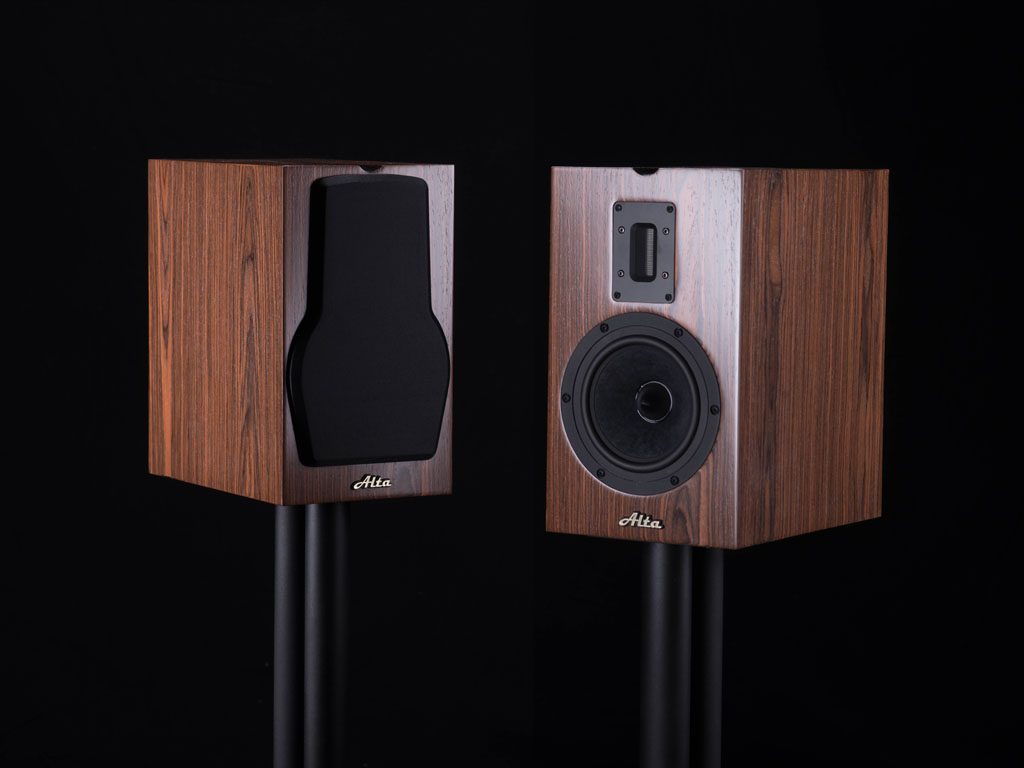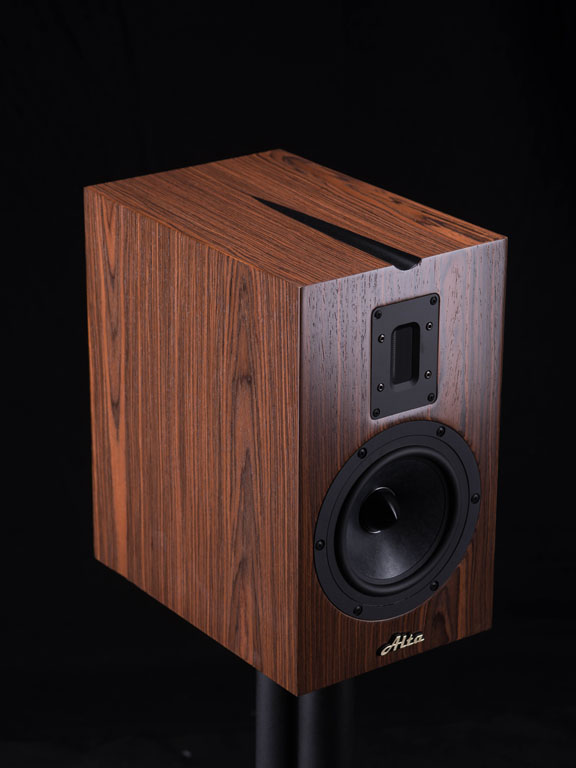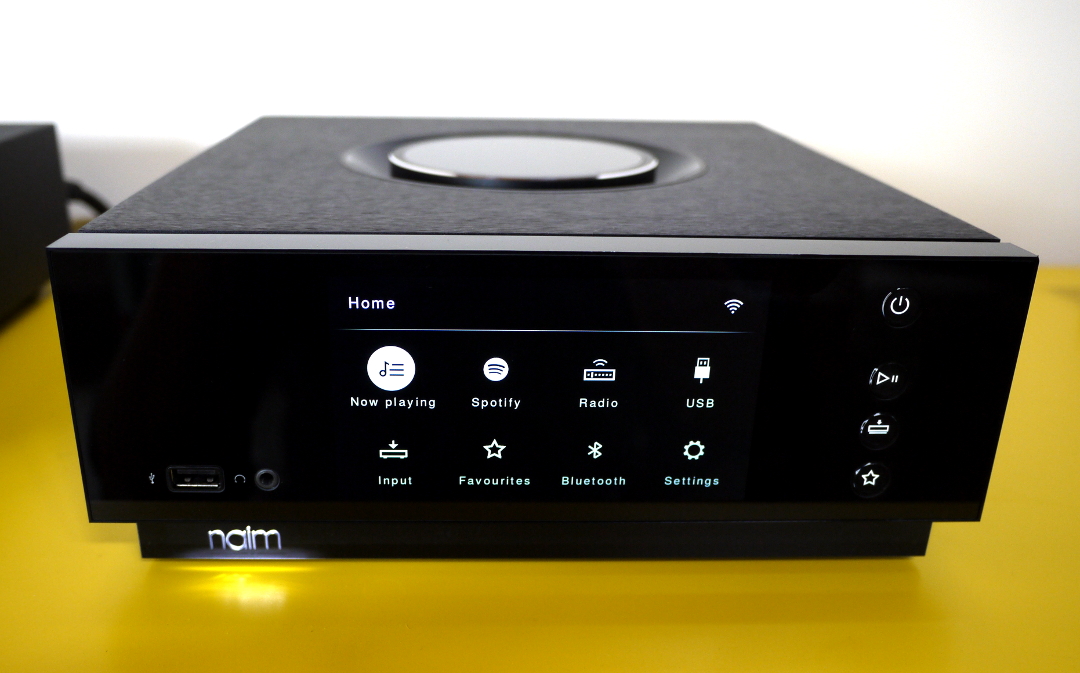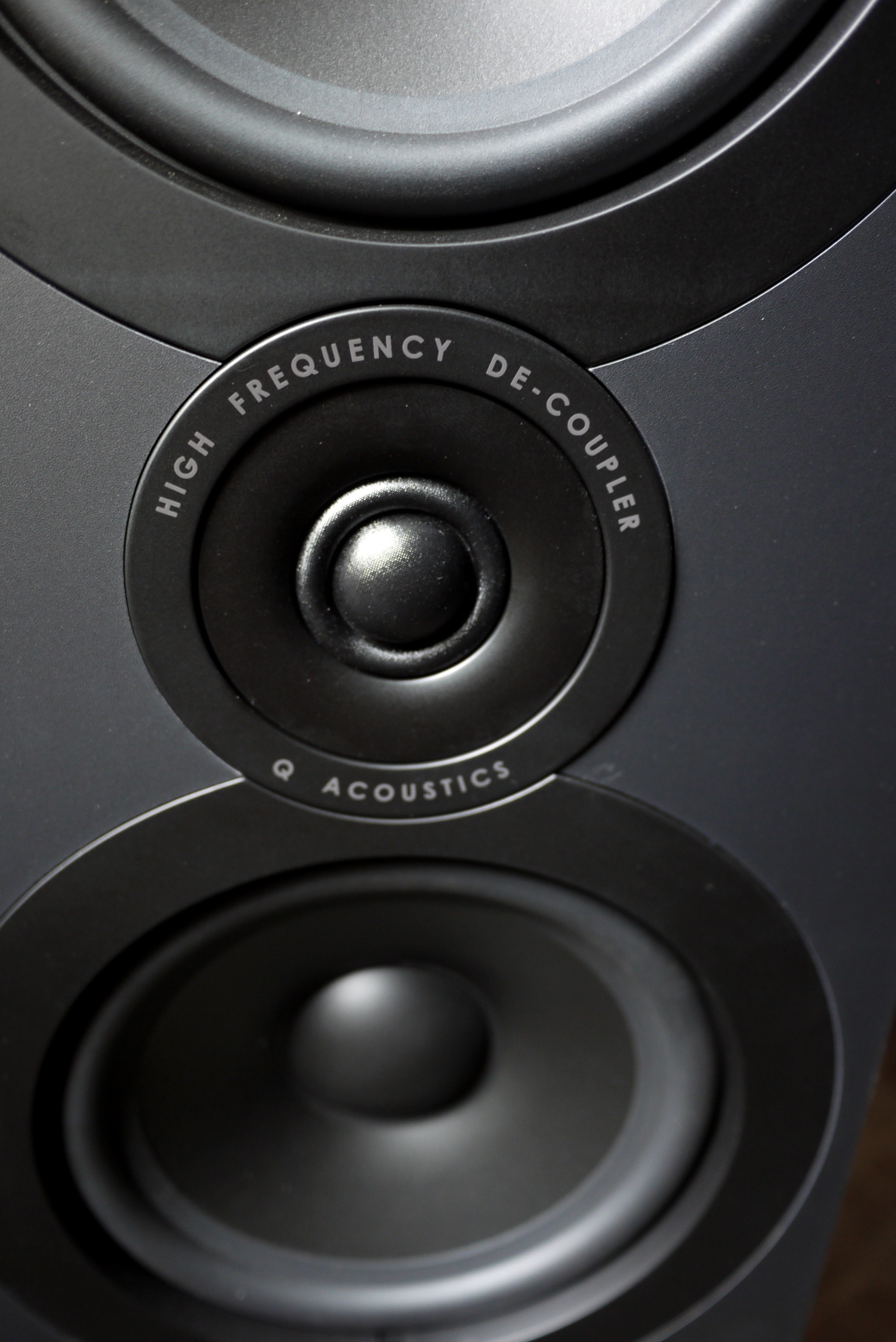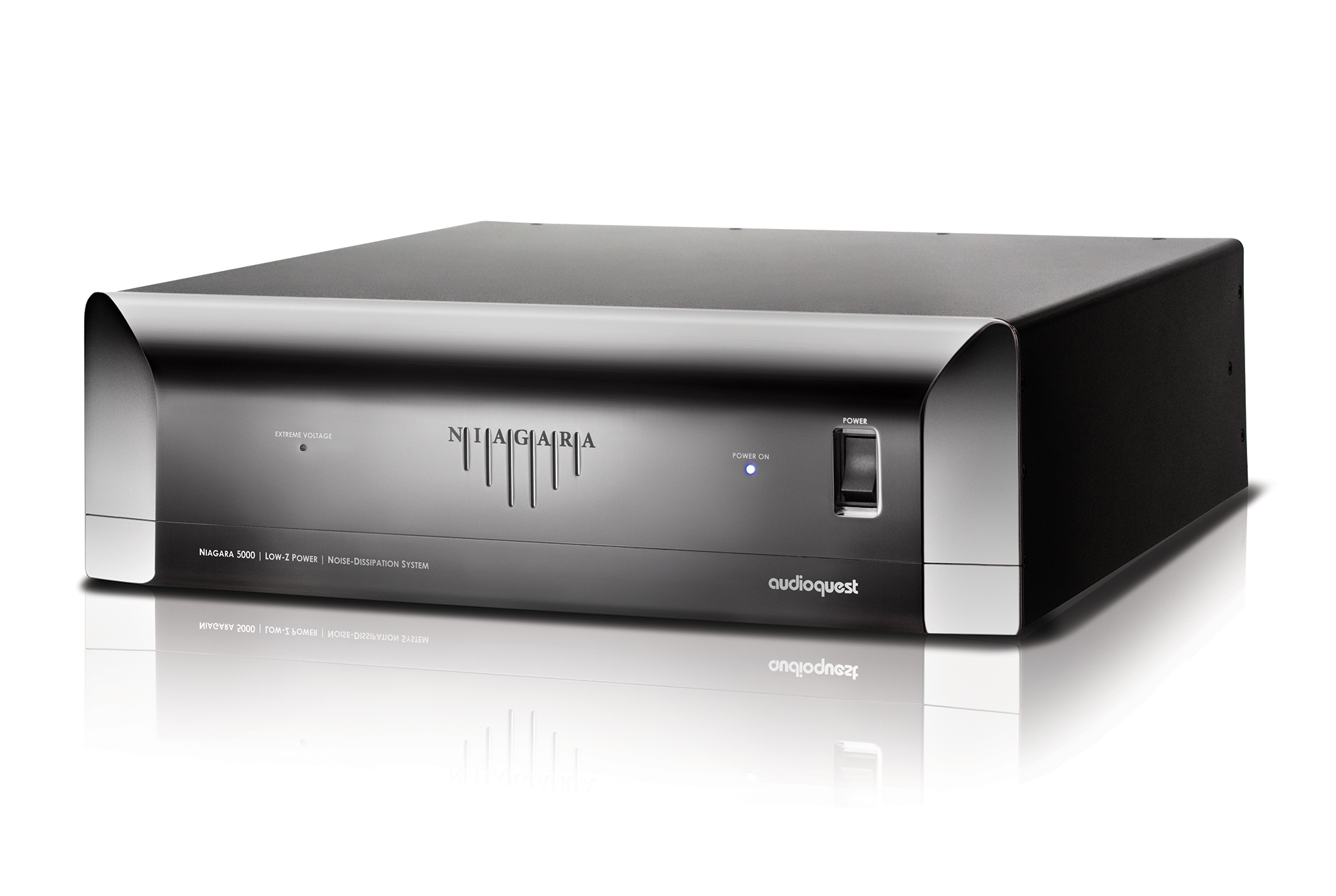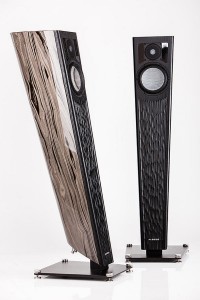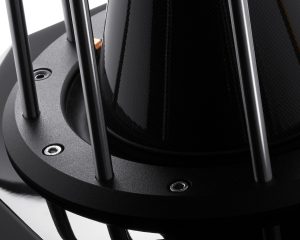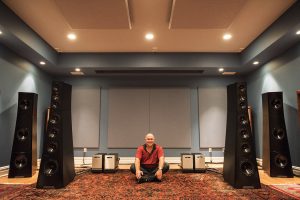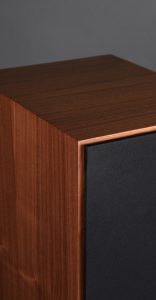Alta Audio started for what I think was a great reason. Someone asked. This is the story of a long-time audio-industry person and speaker designer deciding to leave the field, and then a reviewer friend saying, "Hey I want to be able to own current versions of your wonderful speakers—don't stop making them!"
I like this story because I want to be reminded that brands emerge, from not just industry-disrupting sparks; not just from pure commerce; but from knowledge and community. There was already a group of people asking to be parted with their money for a product they loved, and because of designer Michael Levy's long experience in the audio field, he was able to put together a dream team of listeners comprising musicians, producers, and reviewers, have them listen to live music, and then listen to his prototypes of a loudspeaker that would eventually be called the Celesta.
And this is where Alta Audio began, as a two-way standmount loudspeaker project that grew into a well-regarded company with a tight collection of seven loudspeakers, ranging from the single-driver Solo, to the 11-driver Statement Tower, all manufactured in the US. (An aside, I love the look of that Solo, and is the Alta speaker I'd be most interested in hearing next.)
Meet the Io
The subject of this review is the new Io, the entry-level two-way standmount. The Io is closely based on the Celesta, which Mike still describes as his reference, and one that costs $14,999 to the Io's $3495. The Io are a beautifully built pair of speakers, but there's a restraint to their aesthetic. While they aren't screw-head functional like some British monitors, neither are they sensuous Italian sculptures that happen to emit sound. They remind you rather of a blunt, likable workman in his Sunday best. He looks good, but he's not one for frippery.
And this is probably why everybody asks about that curved notch along the top of the speaker, almost like negative space in which to nestle one of those B&W tweeters. It doesn't look like design for design's sake, and so Mike has to keep telling people that yes, it's simply a visual feature to make his speakers distinctively Alta. But even then, he emphasizes the "workman in a suit" aesthetic by speculating on some minor unintended benefit to that channel, perhaps by breaking up reflections off the ceiling.
My review speakers were the black-ash finish, with rosewood and silver also available. Front bottom is a handsome gold Alta logo, and above, a vaguely tombstone-shaped black grille. Pop it off and there's the 7-inch wideband midrange /woofer with my favorite phase-plug shape: jet-fighter nose cone (yes, I'm pretending that's the technical term). Higher up is the mesh window protecting the pure aluminum 2.5-inch ribbon tweeter. Looking at the enclosure, there's a mysterious voluminousness, the box is both wider and longer than you'd expect. Round the back are twin binding post pairs with stamped jumpers, and up near the top is a bass port, but don't jump to any conclusions just yet. I know you're going to turn on your phone flashlight and peer inside, where you'll probably see a couple of loops of the specialty 10-gauge internal wire, as well as the solid mounting of that third-generation ribbon tweeter with neodymium magnets.
Finally, on the bottom of the Io are thread holes for supplied spikes, so make sure you have stands with large top plates. There are pads supplied as well if you can't or don't want to spike the speakers themselves.
If You Damp, Go Hard
Alta Audio uses a proprietary material in its loudspeakers that it calls DampHard (a name that makes me giggle a little, though I'm no longer 12). Mike describes it as various densities of fiberboard with different damping materials in between, all glued together and constrained. "It's basically acoustically dead, and it does not have any resonances in it within the audible range," says Mike. It's expensive, heavy stuff, so while the Celesta has it on all inner surfaces, the Io keeps cost down by deploying it only behind the faceplate.
If you hadn't removed that grille, it's unlikely you'd picture this speaker with anything but a hearty dome tweeter. In my experience, ribbon tweeters sound as if they hold caged fairies that make music with the flapping of silvered wings, so delicately does the treble shimmer and sparkle. It's simply beautiful, right up to the moment it makes you sick.
But luckily, out of the box, the brand new Io didn't sound shimmery at all. After playing for a few hours, with grilles off as Mike recommends, a sense of space started to seep into the sound, and eventually became an airiness and extension that was satisfying, but never saccharine. The skill with which these ribbons have been integrated is understandable when you hear Mike has always used ribbon tweeters, and has been designing speakers since 1980.
And so, it was not the treble but the bass of the Io that made the big first impression on me. At over a foot deep and 8.5 inches wide, these are not small standmounts, but even so, I did not expect them to do what they did to my room.
Watch that Bass
My listening room is all hard surfaces: porcelain tile, brick, and glass (luckily the latter covered by zig-zagging shutters that take away the glare, both visual and aural). Coupled with an A-frame ceiling in solid wood, the only thing keeping the room from being unbearable is that it relaxes into a higher ceilinged kitchen. Plus, my current T+A Elektroakustik speakers are transmission lines with front-firing openings, a setup that seems to cause more cancellation than reinforcement. So I was amazed when these standmounted Io's put more boom in this room than I'd ever heard. Mike corroborated, saying his speakers are temperamental to set up because they produce so much bass—and he wouldn't have it any other way. Once I pulled the stands way out from the back wall, I could appreciate how tight and deep this low-end actually is.
Now, about that voluminous cabinet: the Io isn't a ported design, but a transmission line that ends with a port. I like transmission lines—I don't mind if bass leans to light, as long as it's deep, fast, and organic. So why doesn't Mike use the expected letterbox opening of a transmission line, using instead what he reluctantly calls a hybrid design? It's is a combination he's arrived at over a lot of experimentation. The port, he says, does the work above driver and cabinet resonance, and the transmission line is tuned to take over at and below resonance, when ports generally lose the plot and have an uncontrolled response.
Live in Living Room
I've never been big on soundstaging, and rarely notice front-to-back placement, but the Alta forced my ears, and I was hooked. It was on the track "Rhumba Mama" that opens the B-side of Weather Report's Heavy Weather, and for the first time I realized just how much Manolo Badrena was moving about as he yelled, and how much depth and space this recording has. In my time with the Io's, I was drawn to live albums, enjoying the view of the stage in front of me, and the way these speakers slung instruments into space to hang in the air (or sometimes deep in the brick cladding of the chimney behind), making me cock my head towards them just like my dogs did.
When I spoke to Mike a couple of weeks in, I wasn't surprised to learn that his inspiration and reference is live music. "And I define live music like this," said Mike. "The sort of concerts where if the power went out, you say ‘Oh shucks, now can we please continue the concert?'"
Mike told me about a memory he carries as a reference point for his speaker designs. It was at "Chicago CES" (at this he laughed and said, "That shows you how old I am") where he was disappointed with the rooms, but was drawn out of the elevator at the second floor by music that turned out to be a Chicago Symphony pianist and violinist rehearsing. Nearly 40 years later, Mike still holds dearly to those 45 minutes of being just 18 inches away from these instruments, with the musicians playing anything he asked them to.
"With live, the sound goes right through you, and not just drums, I mean anything. Flute just goes right through you."
This echoed my favorite moments with the Alta Io, when I sat close to them after moving them into a small bedroom. I wanted to hear how they'd do in a room with carpet and drywall, and though it was just 10 feet by 11, once I found the right positions, the Io's behaved very well. I sat relatively close to those ribbons which gave me an almost headphone-like experience. Pick any Roger Waterian arrangement and it's almost disconcerting how deeply and clearly you can hear into the background intricacy, and suddenly experience things like the wooden solidity of the door being knocked on during "Time to go-oo" on "Bring the Boys Back Home". Parts of tracks I never previously paid attention to became objects in their own right, but absolutely not in a cold or analytical way. I was listening hard, but also loving the music.
When Mike talks of the raison d'etre of the Io, it's to get high quality at a low enough price so that "someone doesn't have to consider themselves a high-end audiophile to get high-end audiophile sound."
And by "high-end audiophile sound" he means great bass performance, three-dimensionality, and the ability of the speakers to disappear. Mike adds that the Io are tuned for people "who sometimes want to blast their speakers", compared with the Celesta. I would add an even more specific customer—someone who has been having the standmount-versus-floorstander debate, and is worried about the bass response of standmounts, understanding that while many go surprisingly deep, there's often a loss of control at the lowest octaves. The Alta Audio Io gives you the clarity and spatial skills of a standmount, but the control of a far bigger loudspeaker over the low end—no huffing and chuffing here.
I'll leave you with this thought: Io—the original—was a beautiful priestess who stole the heart of Zeus; she may have been a mere mortal, but she was able to captivate the god of sky and thunder.
Io Loudspeakers
Retail: $3495
Alta Audio
Michael Levy
631.424.5958




